BuySellBA
Administrator
Renovations, home construction, and wood extensions are gaining in speed, comfort, and efficiency in the country - Ambito

Source:
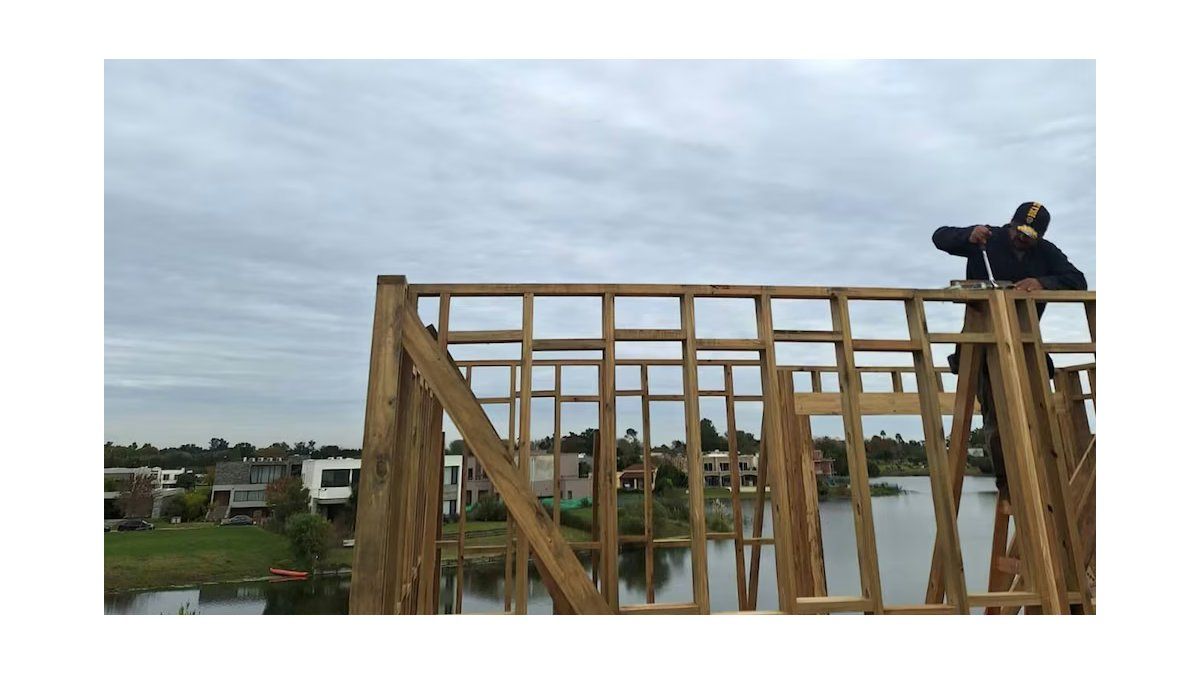
 www.ambito.com
www.ambito.com
October 14, 2025
By Jose Luis Cieri
In gated communities on the coast, the coastal region, and Patagonia, the choice of dry-build homes is growing. They're fast, offer low environmental impact, and offer energy savings.
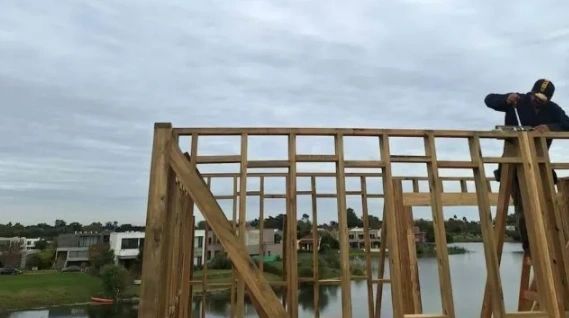
A worker works on the roof of a house under construction in a private neighborhood, where dry system works are multiplying. Newton Lumber
In gated communities in Greater Buenos Aires , coastal towns, and Patagonia, wood construction is consolidating as an efficient , sustainable, and adaptable option. What was a marginal alternative a decade ago is now gaining ground in residential projects, expansions, and renovations. The trend is gaining ground among young families seeking comfort, speed, and a lower environmental impact.
On the Atlantic Coast, the Mesopotamian region, and southern Argentina, dry-build systems with wood structures are multiplying. The Argentine Chamber of Wood (CADAMDA) estimates that demand is growing steadily and that the sector is already undergoing a period of structural expansion.
CADAMDA President Daniel Vier noted that "wood is an efficient, sustainable structural material with incomparable comfort." In his opinion, the current momentum is not just a response to a global ecological trend. "In Argentina, it represents a strategic opportunity to add local value, boost the regional economy, and efficiently respond to housing demand. It is essential to strengthen the link between the state, industry, and academia to advance regulations, technical training, and financing that allow these solutions to be scaled nationally," he said.
This property translates into homes that are naturally cool in the summer and temperate in the winter, with energy savings of up to 30%, depending on the climate zone. In regions with extreme temperatures, such as Patagonia or the Atlantic Coast, this difference reduces the dependence on air conditioning units.
“Wood is the only building material that renews itself over time and improves people's quality of life,” Vier added. “Argentina has the potential to lead a transition toward more efficient, affordable, and environmentally friendly housing.”
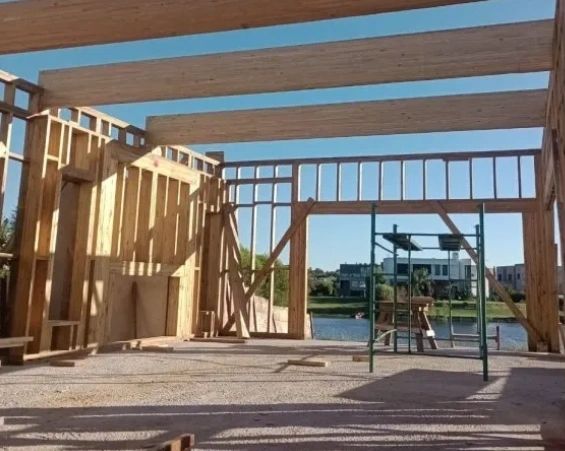
The use of OSB boards and multi-laminated beams allows for the construction of solid and comfortable houses in much shorter timeframes than traditional construction.
“A 125 m2 house is built from groundbreaking to delivery in about three months and costs between $87,000 and $113,000 , depending on the finish and design,” explained Eduardo Serantes , commercial manager of B3. “The system offers advantages such as speed, reduced costs, and a lower environmental impact. It's also cleaner and generates less waste.”
Wood frame is the most widely used method in the world and predominates in more than 90% of homes in the Northern Hemisphere. Its adoption is also growing in Argentina, where it is combined with technologies such as CLT , capable of supporting multi-story buildings.
Due to its thermal behavior and ability to maintain structural stability at high temperatures, wood offers advantages over steel, which deforms before reaching the ignition point. Furthermore, its production process has a lower environmental impact.
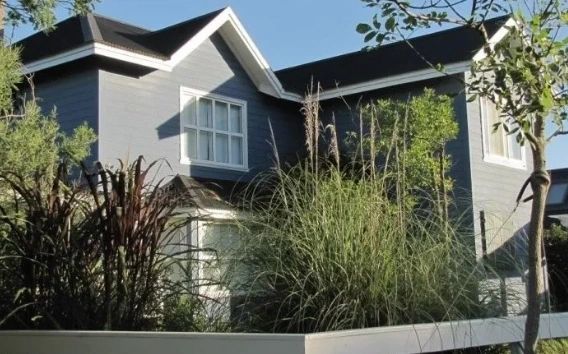
Treated wood is gaining prominence in residential projects due to its thermal efficiency, assembly, and low environmental impact (Photo: architect Octavio Roca in Cariló)
"At the front of the barbecue area, with a seven-meter support, they provide a solid and stable structure. In the living-dining area, the plywood beams support the mezzanine with a 6.20-meter support, ensuring safety and durability," Vier explained.
The price per square meter varies between US$900 and US$2,000 , depending on the quality, finishes, and location. In gated communities, where regulations establish limits on floor area, height, and design, the dry system allows for flexible delivery times without compromising aesthetics.
These panels can withstand up to 18 tons of compressive load, making them suitable for floors, walls, and ceilings. Their structure offers greater strength than masonry and maintains excellent thermal insulation.
In Argentina, wood-frame homes primarily use treated pine or eucalyptus wood, laid out in 2x4 or 2x5-inch slats. The structure is reinforced with OSB (Oriented Strand Board) panels and complemented by internal and external insulation layers that guarantee Type A energy efficiency.
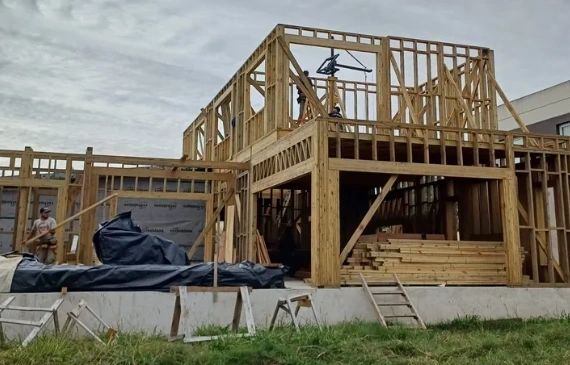
In country clubs and residential areas of Greater Buenos Aires, the demand for sustainable homes built with wood frame structures is growing.
“It's a segment experiencing sustained growth, despite the challenges,” Vier said. “Until a few years ago, wood wasn't considered a relevant structural material. Today, it responds to the need to build more efficient, faster, and more sustainable homes.”
The sector also faces the challenge of overcoming cultural resistance. Although the preference for brick persists, data shows a gradual adoption of the dry-build system. The combination of comfort, speed, and energy efficiency places wood at the center of the new era of Argentine construction.
www.buysellba.com

Source:

Reformas, construcción de casas y ampliaciones en madera ganan en velocidad, confort y eficiencia en el país
En barrios privados, la Costa, el Litoral y la Patagonia, crece la elección de viviendas con obras en seco. Rapidez, bajo impacto ambiental y ahorro energético.
October 14, 2025
By Jose Luis Cieri
In gated communities on the coast, the coastal region, and Patagonia, the choice of dry-build homes is growing. They're fast, offer low environmental impact, and offer energy savings.

A worker works on the roof of a house under construction in a private neighborhood, where dry system works are multiplying. Newton Lumber
In gated communities in Greater Buenos Aires , coastal towns, and Patagonia, wood construction is consolidating as an efficient , sustainable, and adaptable option. What was a marginal alternative a decade ago is now gaining ground in residential projects, expansions, and renovations. The trend is gaining ground among young families seeking comfort, speed, and a lower environmental impact.
On the Atlantic Coast, the Mesopotamian region, and southern Argentina, dry-build systems with wood structures are multiplying. The Argentine Chamber of Wood (CADAMDA) estimates that demand is growing steadily and that the sector is already undergoing a period of structural expansion.
“A few years ago, you didn't see any wood-frame homes (a dry-build system based on a treated wood structure that forms a framework of beams and insulated panels, allowing for solid, efficient, and quick-to-build homes) under construction in gated communities; today, it's estimated that at least one or two out of every hundred are of this type,” said Germán Gómez Picasso of Reporte Inmobiliario.CADAMDA President Daniel Vier noted that "wood is an efficient, sustainable structural material with incomparable comfort." In his opinion, the current momentum is not just a response to a global ecological trend. "In Argentina, it represents a strategic opportunity to add local value, boost the regional economy, and efficiently respond to housing demand. It is essential to strengthen the link between the state, industry, and academia to advance regulations, technical training, and financing that allow these solutions to be scaled nationally," he said.
Thermal comfort and energy efficiency
In a country where heating and cooling account for nearly 40% of residential energy consumption, the use of insulating materials is key. Wood, due to its cellular structure, acts as a natural thermal and acoustic insulator. A 10-centimeter wooden wall can insulate up to 3.6 times more than brick and 5.7 times more than concrete.This property translates into homes that are naturally cool in the summer and temperate in the winter, with energy savings of up to 30%, depending on the climate zone. In regions with extreme temperatures, such as Patagonia or the Atlantic Coast, this difference reduces the dependence on air conditioning units.
“Wood is the only building material that renews itself over time and improves people's quality of life,” Vier added. “Argentina has the potential to lead a transition toward more efficient, affordable, and environmentally friendly housing.”
Fast, clean and adaptable construction
Timber frame systems significantly reduce construction times. Unlike traditional wet-frame construction, wood frame or CLT (cross-laminated timber) homes are built with less waste and without interruptions due to weather conditions.
The use of OSB boards and multi-laminated beams allows for the construction of solid and comfortable houses in much shorter timeframes than traditional construction.
“A 125 m2 house is built from groundbreaking to delivery in about three months and costs between $87,000 and $113,000 , depending on the finish and design,” explained Eduardo Serantes , commercial manager of B3. “The system offers advantages such as speed, reduced costs, and a lower environmental impact. It's also cleaner and generates less waste.”
Wood frame is the most widely used method in the world and predominates in more than 90% of homes in the Northern Hemisphere. Its adoption is also growing in Argentina, where it is combined with technologies such as CLT , capable of supporting multi-story buildings.
Safety and myths about fire
Contrary to popular belief, treated structural wood is more fire-resistant than other building materials. "It begins to burn from the outside in, but retains its load-bearing capacity for a long time, which facilitates evacuation and reduces risks," Serantes said.Due to its thermal behavior and ability to maintain structural stability at high temperatures, wood offers advantages over steel, which deforms before reaching the ignition point. Furthermore, its production process has a lower environmental impact.
New neighborhoods and model cases
The use of wood is expanding in medium- and high-scale projects. In San Matías, a private neighborhood in Escobar, a 350 m2 single-family home is being built with 4x20 meter laminated beams, designed and built by Maderera Newton with support from Cadamda.
Treated wood is gaining prominence in residential projects due to its thermal efficiency, assembly, and low environmental impact (Photo: architect Octavio Roca in Cariló)
"At the front of the barbecue area, with a seven-meter support, they provide a solid and stable structure. In the living-dining area, the plywood beams support the mezzanine with a 6.20-meter support, ensuring safety and durability," Vier explained.
The price per square meter varies between US$900 and US$2,000 , depending on the quality, finishes, and location. In gated communities, where regulations establish limits on floor area, height, and design, the dry system allows for flexible delivery times without compromising aesthetics.
Industrial wood and modern techniques
Timber framing consists of vertical frames on horizontal surfaces that form the building's envelope. From there, interior installations and finishes are integrated. The use of SIP (Structural Insulated Panels) is also gaining ground, consisting of two wooden panels joined by a rigid polystyrene or polyurethane foam core.These panels can withstand up to 18 tons of compressive load, making them suitable for floors, walls, and ceilings. Their structure offers greater strength than masonry and maintains excellent thermal insulation.
In Argentina, wood-frame homes primarily use treated pine or eucalyptus wood, laid out in 2x4 or 2x5-inch slats. The structure is reinforced with OSB (Oriented Strand Board) panels and complemented by internal and external insulation layers that guarantee Type A energy efficiency.
Trend with regional projection
The boom in wood construction is not limited to Buenos Aires. In the coastal provinces and Patagonia, the material is part of the landscape and gains prominence in tourism developments and family homes. In Misiones, Corrientes, and Entre Ríos, where there is an abundant supply of forests, the challenge lies in industrializing the raw material and strengthening the value chain.
In country clubs and residential areas of Greater Buenos Aires, the demand for sustainable homes built with wood frame structures is growing.
“It's a segment experiencing sustained growth, despite the challenges,” Vier said. “Until a few years ago, wood wasn't considered a relevant structural material. Today, it responds to the need to build more efficient, faster, and more sustainable homes.”
The sector also faces the challenge of overcoming cultural resistance. Although the preference for brick persists, data shows a gradual adoption of the dry-build system. The combination of comfort, speed, and energy efficiency places wood at the center of the new era of Argentine construction.
www.buysellba.com

